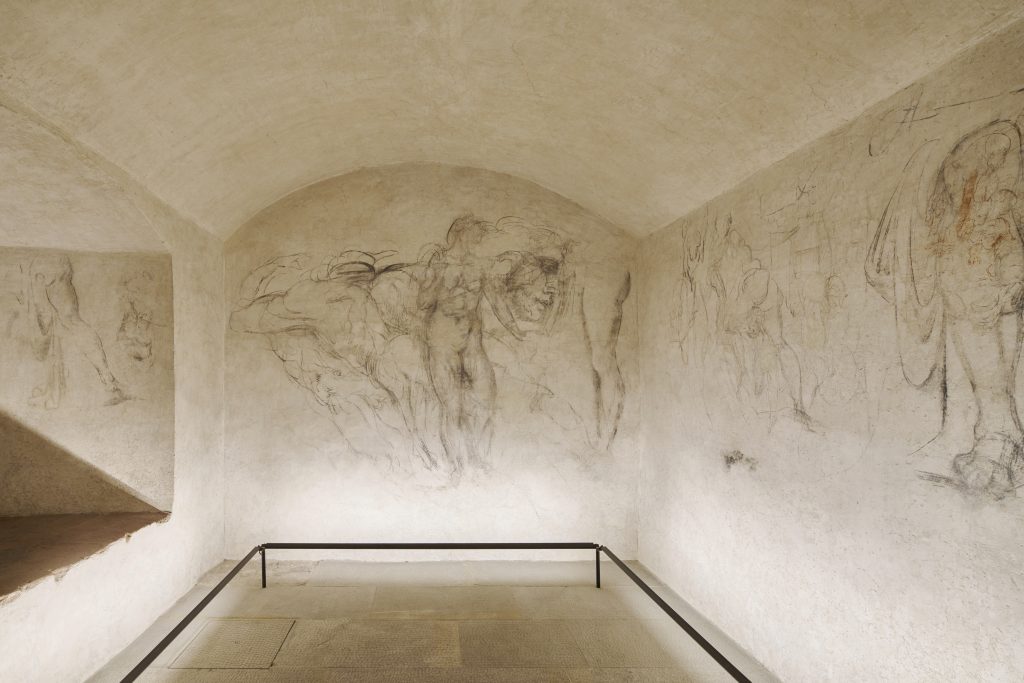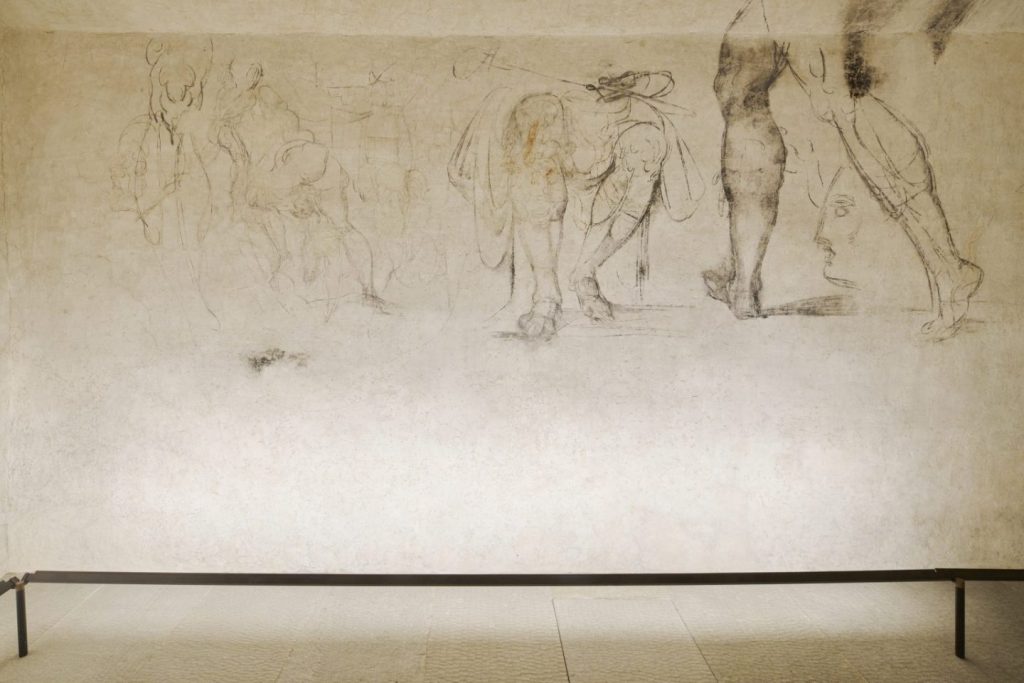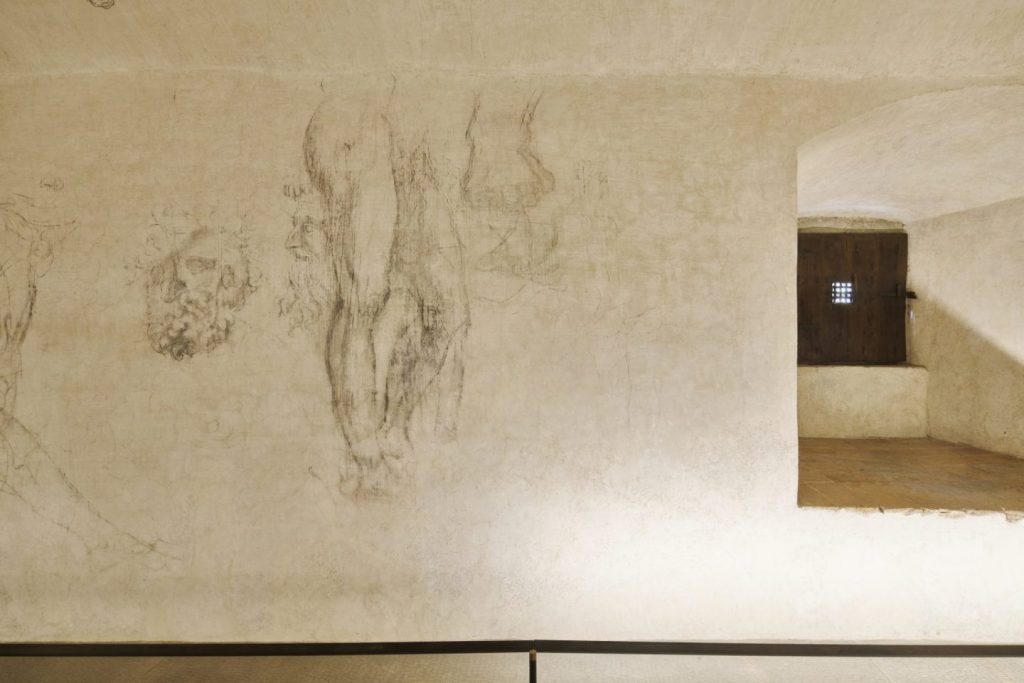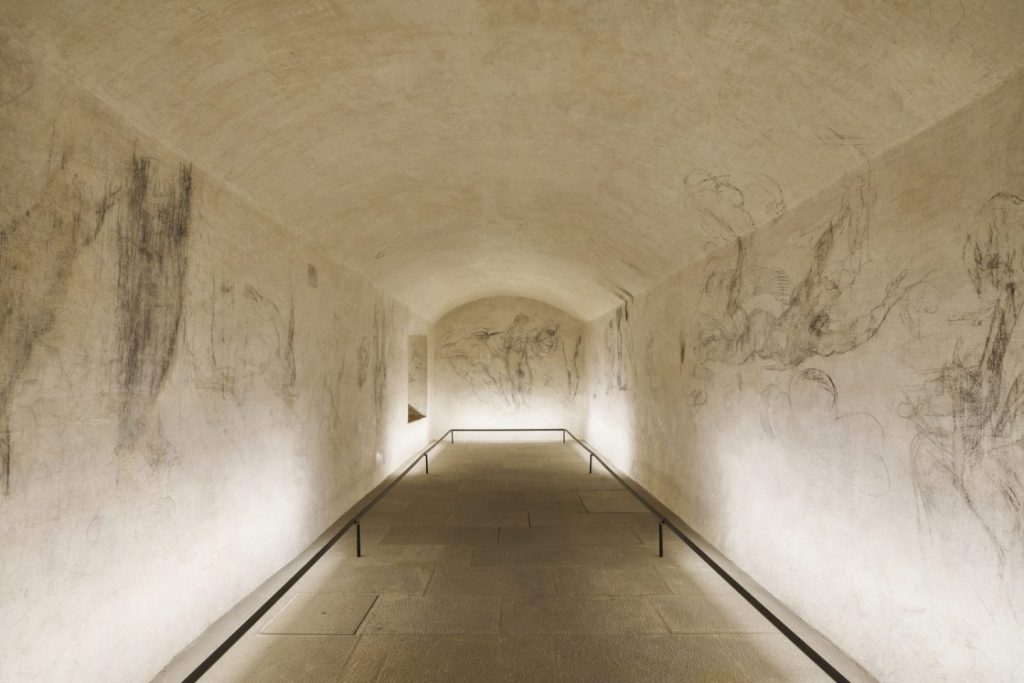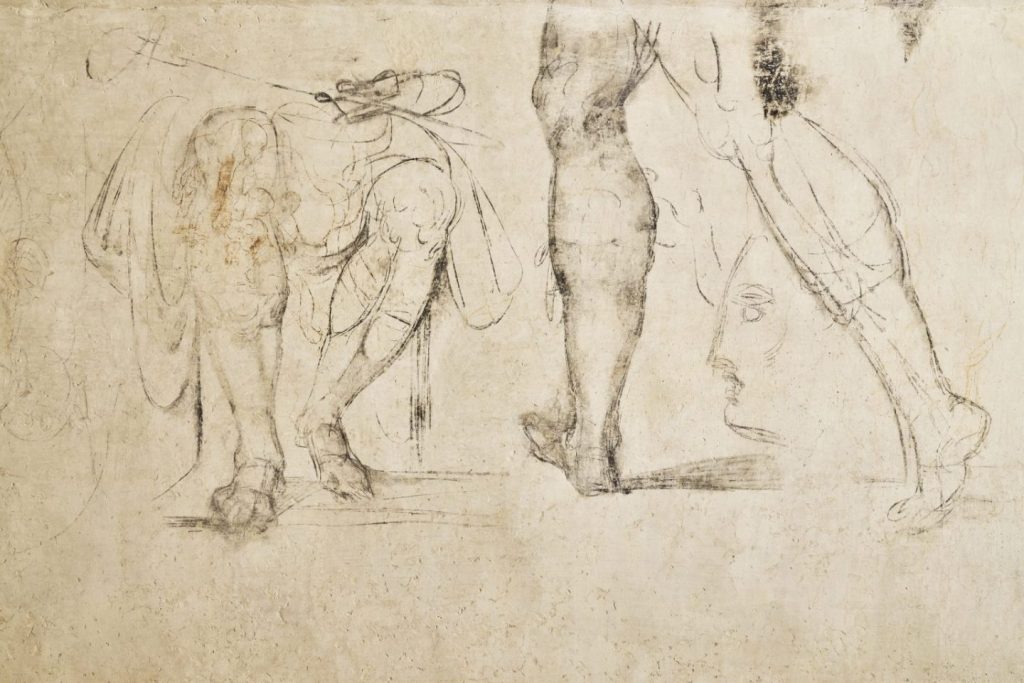Michelangelo is believed to have made the rarely seen drawings while in hiding after the pope sentenced him to death.
Sarah Cascone for Artnet News – Guidebooks to the Italian city of Florence have long noted that the Basilica of San Lorenzo is home to a secret room believed to have been decorated by Michelangelo while the famed Renaissance master was in hiding from the pope for two months in 1530. Now, the chamber, which is part of the the Museum of the Medici Chapels (itself one of the fives sites of the city’s Bargello Museums), will be open to the public for the first time.
“The completion of the works on the new exit and the adaptations to align… with safety regulations, will allow the opening of Michelangelo’s Secret Room—an extraordinarily fascinating place, but extremely delicate due to… the narrow space… and… the need to protect the charcoal drawings found on the walls,” Massimo Osanna, director general of museums in Italy, said in a statement.
The stunning drawings of the Stanza Segreta, or Secret Room, were rediscovered in 1975.
The stunning drawings of the Stanza Segreta, or Secret Room, were rediscovered in 1975. That’s when Paolo Dal Poggetto, then director of the Museum of the Medici Chapels, tasked restorer Sabino Giovannoni with trying to clean part of the walls of a narrow chamber beneath the church’s mausoleum, which had been designed by Michelangelo in 1520.
The corridor, measuring about 32 feet long, 10 feet wide, and eight feet tall, had been used it to store coal, until it had been sealed shut some 20 years prior. It was accessible only by narrow stairway beneath a trap door that had been concealed beneath a wardrobe amid a pile of unused furniture and decor.
The initial plan was to potentially create a new tourist entry and exit point from the museum. But what Giovannoni found changed everything. Hidden under two layers of plaster, he soon realized, the walls were covered in large-scale charcoal and red chalk sanguine drawings executed with the confidence and ease of a master draftsman.
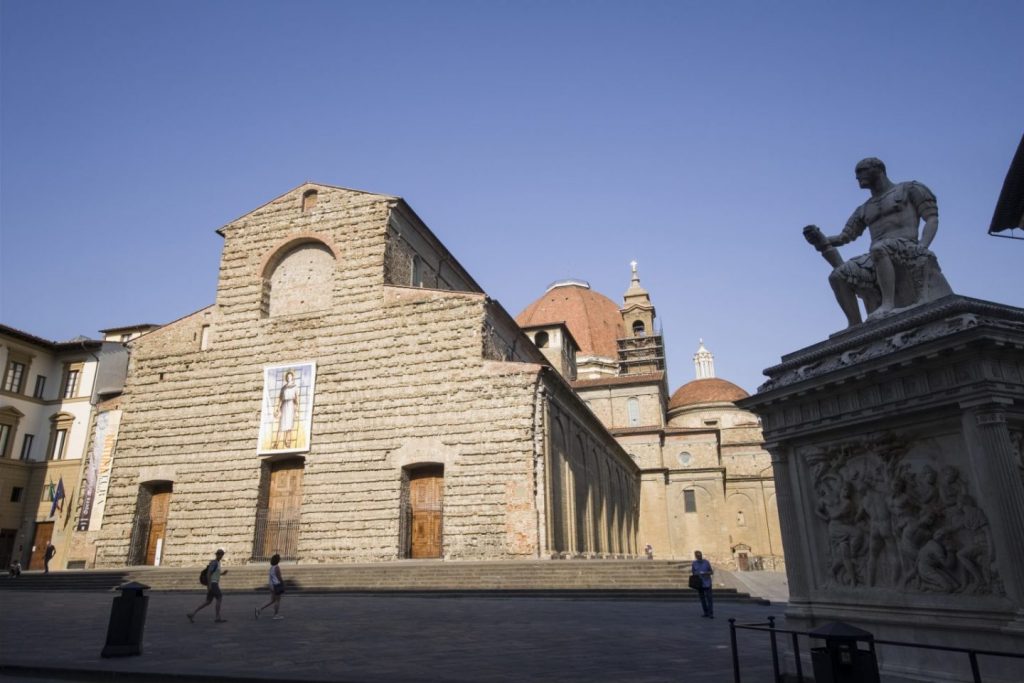
“The moment you enter that room you simply are speechless,” Paola D’Agostino, director of the Bargello Museums, told the New York Times, adding that as your eyes adjust to the low light “you start seeing all the different drawings and all the different layers.”
But why would Michelangelo have been sequestered in this subterranean space, with just a single window letting in light from the street above?
At the time, the artist’s main patrons, the Medici family, had just returned from exile, having been overthrown by a populist revolt in 1527. Because Michelangelo had worked on behalf of the republican government, supervising the city’s fortifications, Pope Clement VII—a member of the family—had sentenced him to death.
Hiding beneath the basilica was a way for Michelangelo to lay low until he was back in the pope’s good graces. Fortunately, the Medicis ended up forgiving Michelangelo about two months later, lifting the death sentence and allowing him to leave his (freshly decorated) hiding place to resume work on the family’s tombs at the basilica.
Most scholars are in agreement that the chamber’s sketches appear to be the work of Michelangelo.
Most scholars are in agreement that the chamber’s sketches appear to be the work of Michelangelo.
If you want to judge for yourself, be forewarned that there will still only be limited access to the Secret Room. The museum is making just 100 tickets—priced at €32 ($34), including access to the Medici Chapels—available for each week, with 15 minute slots for groups of four. There is a 45-minute gap between each visit, to limit the works’ exposure to light.


